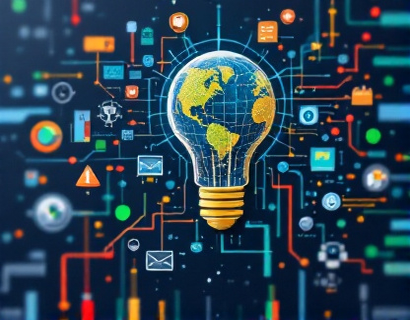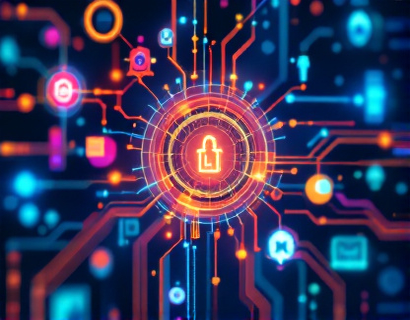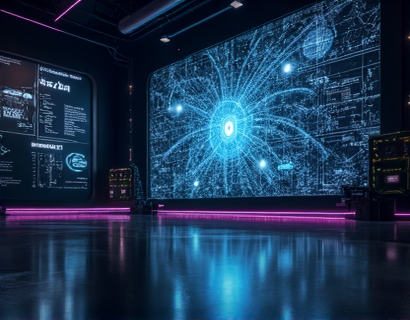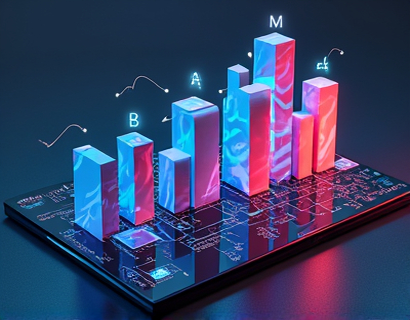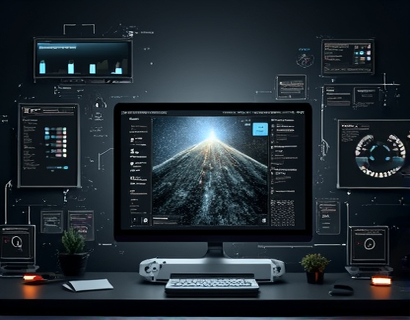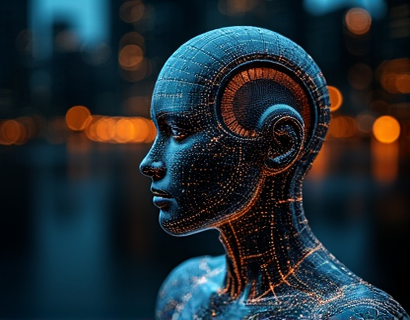Transforming Education with AI-Powered Chatbots: Ensuring Safe and Verified Access to Industry Insights for Students
The integration of artificial intelligence in education has opened new avenues for learning, particularly through the use of AI-powered educational chatbots. These chatbots provide a secure and verified platform for children and students to access specialized industry insights and workshop knowledge. The primary goal is to enhance learning through safe and interactive content, making education more accessible and engaging. This article delves into how these AI-driven tools are revolutionizing the way students interact with educational material, ensuring that the content is both verified and suitable for young learners.
Understanding the Need for Safe Educational Content
The digital age has brought about an explosion of information, but not all of it is suitable or accurate for children and students. The need for a safe and verified platform becomes paramount in this context. Traditional educational resources, while valuable, often lack the interactivity and immediacy that modern students expect. AI-powered chatbots bridge this gap by offering a tailored learning experience that is both safe and informative. These chatbots are designed to interact with users in a conversational manner, providing answers to queries and guiding students through complex topics in an understandable way.
How AI Chatbots Enhance Learning
AI chatbots in education serve multiple purposes. They act as personal tutors, providing one-on-one support to students. By leveraging natural language processing, these chatbots can understand and respond to a wide range of questions, making learning more interactive and engaging. For instance, a student asking about a specific industry practice or workshop service can receive detailed explanations and examples tailored to their level of understanding. This personalized approach not only enhances comprehension but also boosts confidence and motivation.
Moreover, AI chatbots can adapt to the learning pace of each student. They can identify areas where a student might be struggling and provide additional resources or explanations. This adaptive learning capability ensures that no student is left behind, fostering an inclusive educational environment. The chatbots can also track progress over time, offering feedback and suggestions for improvement, which is invaluable for both students and educators.
Verified and Contextual Content
One of the most significant advantages of using AI-powered chatbots in education is the ability to deliver verified content. In an era where misinformation is rampant, ensuring that the information students access is accurate and reliable is crucial. These chatbots are programmed to source information from trusted databases and industry experts, ensuring that the content is not only accurate but also up-to-date. This verification process builds trust and credibility, making the learning experience more effective.
Furthermore, the content provided by these chatbots is contextually relevant. Whether a student is exploring a particular industry, preparing for a workshop, or seeking general knowledge, the chatbot can provide tailored information that aligns with their interests and educational goals. This relevance keeps students engaged and motivated, as they see the direct application of what they are learning.
Interactive and Engaging Learning Experiences
Interactivity is a key feature of AI-powered educational chatbots. Unlike static textbooks or traditional online courses, chatbots facilitate a dynamic learning environment. Students can ask questions, engage in discussions, and receive immediate feedback. This interactivity not only makes learning more enjoyable but also helps in retaining information better. For example, a student learning about a specific manufacturing process can simulate steps, ask about potential challenges, and receive real-time guidance on how to overcome them.
Gamification elements can also be integrated into these chatbots to make learning more fun. Quizzes, puzzles, and interactive challenges can be designed to reinforce key concepts. These elements not only make the learning process more engaging but also help in assessing the student's understanding of the material. The chatbot can provide hints, explanations, and additional resources based on the student's performance, ensuring a comprehensive learning experience.
Ensuring a Safe Online Environment
Safety is a top priority when it comes to educational platforms, especially those targeted at children and students. AI-powered chatbots are designed with robust safety measures to create a secure online environment. These measures include strict content filtering to prevent the dissemination of inappropriate or harmful information. The chatbots are programmed to recognize and respond appropriately to sensitive topics, ensuring that the conversations remain educational and appropriate for the age group.
Additionally, these chatbots can be integrated with parental controls and monitoring tools, allowing parents and educators to oversee the learning process. This transparency and control provide peace of mind, knowing that children are accessing safe and educational content. The chatbots can also be configured to limit interactions to pre-approved topics and sources, further enhancing the safety of the platform.
Facilitating Access to Industry Insights and Workshop Knowledge
One of the primary functions of AI-powered educational chatbots is to provide access to specialized industry insights and workshop knowledge. These chatbots can serve as a gateway to a wealth of information that might otherwise be difficult for students to find. For instance, a student interested in the automotive industry can ask the chatbot about different manufacturing processes, current trends, and emerging technologies. The chatbot can provide detailed explanations, supported by case studies and real-world examples, making the learning experience more comprehensive.
Workshops and seminars are crucial for hands-on learning and networking. AI chatbots can offer insights into upcoming workshops, detailing the agenda, key speakers, and registration processes. Students can ask questions about the workshop content, and the chatbot can provide summaries and key takeaways from past events. This not only helps students make informed decisions about which workshops to attend but also prepares them better for the sessions.
Customization and Personalization
Every student is unique, with different learning styles and preferences. AI-powered chatbots can cater to this diversity by offering personalized learning paths. Based on the student's interests, performance, and feedback, the chatbot can recommend specific resources, topics, and activities. For example, a student with a keen interest in renewable energy can receive curated content on the latest advancements, relevant workshops, and expert interviews in that field.
Personalization extends to the interaction style as well. The chatbot can adapt its tone and language to match the student's comfort level, whether it's formal and academic or more casual and conversational. This flexibility ensures that students feel at ease while learning, which is essential for effective knowledge absorption.
Supporting Collaborative Learning
Collaboration is a vital aspect of the learning process, and AI chatbots can facilitate this in several ways. Students can use the chatbot to form study groups, find peers with similar interests, and engage in group discussions. The chatbot can manage these groups, assign roles, and facilitate the exchange of ideas and resources. This collaborative environment not only enhances learning but also helps in developing important social and communication skills.
Moreover, the chatbot can assist in organizing virtual study sessions and workshops, where students can interact in real-time. Features like breakout rooms, shared documents, and live Q&A sessions can be integrated to mimic the dynamics of in-person gatherings. This approach ensures that students can benefit from collective knowledge and diverse perspectives, enriching their learning experience.
Continuous Improvement and Feedback Loops
AI-powered chatbots are not static entities; they continuously learn and improve based on user interactions. Feedback from students and educators is crucial in refining the chatbot's performance and expanding its capabilities. This feedback loop allows the chatbot to better understand the needs of its users and adapt its responses accordingly. For instance, if multiple students ask for clarification on a particular concept, the chatbot can prioritize developing more detailed explanations for that topic.
Data analytics play a significant role in this continuous improvement process. By analyzing usage patterns and user interactions, developers can identify areas for enhancement and introduce new features that address specific pain points. This data-driven approach ensures that the chatbot remains relevant and effective, providing the best possible educational experience.
Conclusion
The integration of AI-powered educational chatbots represents a significant leap forward in making education more accessible, interactive, and safe for children and students. These chatbots not only provide verified and contextual information but also create an engaging and personalized learning environment. By facilitating access to industry insights and workshop knowledge, they bridge the gap between theoretical learning and practical application. As technology continues to evolve, the potential for AI in education is vast, promising a future where learning is not only effective but also enjoyable and secure.











